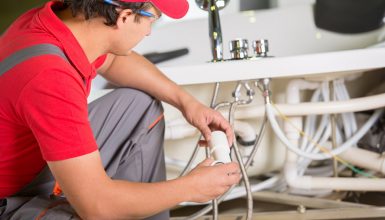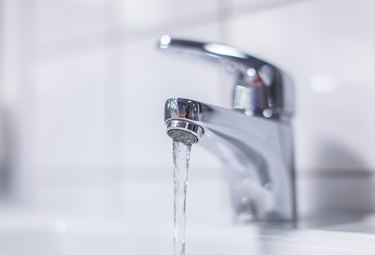Rapid Remedies for Dealing with Low Water Pressure in Your Home
Rapid Remedies for Dealing with Low Water Pressure in Your Home
Blog Article
We've uncovered this post on 10 Reasons for Low Water Pressure in Your House down the page on the internet and think it made sense to write about it with you in this article.

Low water stress in your home can be an irritating problem, affecting whatever from bathing to washing dishes. If you're experiencing weak water flow, there are a number of feasible reasons and options to discover. In this overview, we'll discuss common reasons for low tide pressure and functional actions to resolve the concern effectively.
Introduction to Low Water Stress
Low tide pressure occurs when the flow of water from your faucets, showers, and other components is weak than typical. This can make day-to-day jobs more challenging and less efficient. Understanding the reasons for low tide pressure is crucial to finding the best option.
Usual Reasons For Low Water Stress
Pipe Obstructions
With time, pipes can become obstructed with mineral deposits, sediment, or debris, restricting the circulation of water. This is an usual issue in older homes with galvanized steel pipelines.
Rust
Rust within pipelines can cause leakages and reduced water pressure. Corrosion accumulation can constrict water flow, specifically in aging plumbing systems.
Faulty Pressure Regulatory Authorities
Stress regulators are responsible for keeping constant water stress in your home. If they malfunction, it can result in low water pressure or uneven circulation throughout your home.
Community Water Supply Issues
Occasionally, the trouble lies outside your home. Metropolitan supply of water problems, such as main line leakages or upkeep job, can temporarily minimize water pressure in your area.
Exactly How to Identify Low Tide Stress
Checking Faucets and Fixtures
Beginning by testing the water stress at various taps and components throughout your home. If the issue is isolated to details areas, it might indicate localized issues.
Evaluating Pipes
Evaluate visible pipes for indications of leakages, rust, or clogs. Take note of any type of uncommon noises, such as knocking or rattling pipelines, which might suggest issues within the plumbing system.
Consulting with a Plumber
If you're incapable to pinpoint the cause of low tide stress, take into consideration hiring a professional plumber to perform a comprehensive inspection. They can recognize underlying issues and recommend appropriate services.
Do It Yourself Solutions to Deal With Low Tide Stress
Cleaning Aerators and Showerheads
Natural resources can gather in aerators and showerheads, decreasing water circulation. Eliminate and clean these parts frequently to boost water pressure.
Flushing Hot Water Heater
Sediment accumulation in the water heater can restrict flow and lower effectiveness. Flushing the container periodically helps eliminate debris and maintain optimal performance.
Inspecting Stress Regulator
Make sure that the stress regulatory authority is working correctly. Readjusting or changing the regulatory authority can help recover proper water pressure throughout your home.
Cleaning Clogs in Water Lines
For minor obstructions, attempt utilizing a plumbing snake or chemical drain cleaner to clear blockages in pipes. Be cautious when using chemicals and follow security guidelines.
When to Call a Professional Plumber
If DIY initiatives fail to resolve the issue or if you presume considerable plumbing problems, it's best to seek help from a certified plumber. They have the competence and devices to deal with complex problems securely and properly.
Safety Nets to Keep Water Pressure
Regular Maintenance
Set up regular maintenance for your plumbing system to avoid concerns such as rust, leakages, and blockages. Dealing with small issues early can aid stay clear of even more considerable repairs later on.
Mounting a Stress Booster
Consider setting up a pressure booster pump to enhance water pressure in locations with regularly low flow. This can be particularly useful for multi-story homes or buildings with high-demand fixtures.
Monitoring Water Usage
Bear in mind water use practices and prevent overtaxing the plumbing system. Basic changes, such as shocking showers and washing lots, can assist preserve appropriate water pressure.
Verdict
Taking care of low water pressure can be frustrating, but determining the underlying causes and applying appropriate solutions can recover ideal flow throughout your home. Whether it's cleansing aerators, examining pipelines, or seeking advice from a plumber, taking proactive actions can ensure a consistent supply of water for your day-to-day requirements.
FOUR WAYS TO FIX LOW WATER PRESSURE NOW
Turning on a shower or faucet only to find the water comes out in a sad, slow drizzle is never a good feeling. How exactly are you supposed to wash a pan or take a quick shower when it takes 10 minutes just to rinse off a little soap? The good news is that when your water pressure is bad, there's always a cause: typically one that can be easily fixed. Here are some of the most common causes of low pressure and what you can do to fix the issue:
DEBRIS AND MINERAL DEPOSIT BUILDUPS
If you notice low water pressure from just one or two of the fixtures in your house, the problem likely has to do with debris buildup. Water is full of minerals and other debris, all of which can accumulate in your pipes and on your fixtures. This can cause a blockage that affects how much water flows through. To fix this, try filling a small plastic bag with white vinegar, and use a rubber band to hang it around your showerhead or faucet. Let the head of the fixture soak for a few hours, and the vinegar should loosen the deposits.
WATER LEAKS
Leaks are another common cause of low water pressure. If water is flowing out of your plumbing through a hole or crack before it can reach your fixture, the pressure coming out of the faucet or showerhead will be lower. A plumbing professional is your best bet for finding and repairing a leak in your water supply pipes.
Leaks are another common cause of low water pressure. If water is flowing out of your plumbing through a hole or crack before it can reach your fixture, the pressure coming out of the faucet or showerhead will be lower. A plumbing professional is your best bet for finding and repairing a leak in your water supply pipes.
FOUR WAYS TO FIX LOW WATER PRESSURE NOW
Turning on a shower or faucet only to find the water comes out in a sad, slow drizzle is never a good feeling. How exactly are you supposed to wash a pan or take a quick shower when it takes 10 minutes just to rinse off a little soap? The good news is that when your water pressure is bad, there's always a cause: typically one that can be easily fixed. Here are some of the most common causes of low pressure and what you can do to fix the issue:
DEBRIS AND MINERAL DEPOSIT BUILDUPS
If you notice low water pressure from just one or two of the fixtures in your house, the problem likely has to do with debris buildup. Water is full of minerals and other debris, all of which can accumulate in your pipes and on your fixtures. This can cause a blockage that affects how much water flows through. To fix this, try filling a small plastic bag with white vinegar, and use a rubber band to hang it around your showerhead or faucet. Let the head of the fixture soak for a few hours, and the vinegar should loosen the deposits.
WATER LEAKS
Leaks are another common cause of low water pressure. If water is flowing out of your plumbing through a hole or crack before it can reach your fixture, the pressure coming out of the faucet or showerhead will be lower. A plumbing professional is your best bet for finding and repairing a leak in your water supply pipes.
Leaks are another common cause of low water pressure. If water is flowing out of your plumbing through a hole or crack before it can reach your fixture, the pressure coming out of the faucet or showerhead will be lower. A plumbing professional is your best bet for finding and repairing a leak in your water supply pipes.
A VALVE ISSUE
If you have low water pressure throughout your home, check your main shut-off valve to make sure it's completely open. You may also want to see if there's a pressure-reducing valve installed. If there is, have a plumber help you adjust the settings to get the pressure you're looking for.
OTHERS USING WATER
Believe it or not, your low water pressure could be caused by your neighbors. If you notice low pressure at certain times of day, it may be because you and the people living next to you have similar schedules - when everyone is showering at the same time, the pressure will be lower in every home. Low pressure throughout the neighborhood may also be caused by an issue with your municipal water supply. If that's the case, call the supplier to see if they're working on the issue.
https://www.rotorooter.com/blog/water-leaking/low-water-pressure-fixes/

Hopefully you liked our section on 10 Reasons for Low Water Pressure in Your House. Thanks a lot for taking time to read our article post. Enjoyed reading our piece of writing? Please share it. Help other people discover it. We take joy in reading our article about 9 Reasons for Low Water Pressure in Your House.
Click Here Report this page